
Valentin Louis Georges Eugène Marcel Proust was a French novelist, literary critic, and essayist who wrote the monumental novel À la recherche du temps perdu which was published in seven volumes between 1913 and 1927. He is considered by critics and writers to be one of the most influential authors of the 20th century.
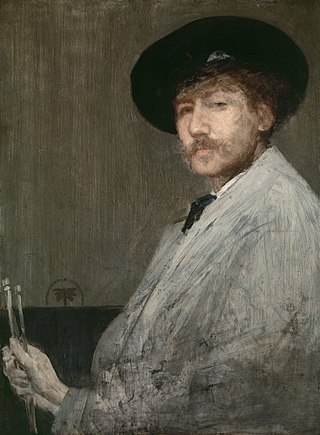
James Abbott McNeill Whistler was an American painter in oils and watercolor, and printmaker, active during the American Gilded Age and based primarily in the United Kingdom. He eschewed sentimentality and moral allusion in painting and was a leading proponent of the credo "art for art's sake".
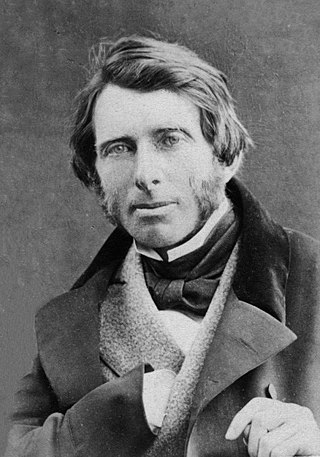
John Ruskin was an English writer, philosopher, art historian, art critic and polymath of the Victorian era. He wrote on subjects as varied as geology, architecture, myth, ornithology, literature, education, botany and political economy.
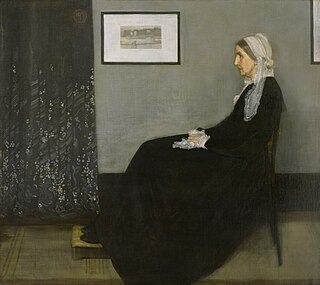
Arrangement in Grey and Black No. 1, best known under its colloquial name Whistler's Mother or Portrait of Artist's Mother, is a painting in oils on canvas created by the American-born painter James McNeill Whistler in 1871. The subject of the painting is Whistler's mother, Anna McNeill Whistler. The painting is 56.81 by 63.94 inches, displayed in a frame of Whistler's own design. It is held by the Musée d'Orsay in Paris, having been bought by the French state in 1891. It is one of the most famous works by an American artist outside the United States. It has been variously described as an American icon and a Victorian Mona Lisa.

The Yale Center for British Art at Yale University in central New Haven, Connecticut, houses the largest and most comprehensive collection of British art outside the United Kingdom. The collection of paintings, sculpture, drawings, prints, rare books, and manuscripts reflects the development of British art and culture from the Elizabethan period onward.
Michael Martin Fried is a modernist art critic and art historian. He studied at Princeton University and Harvard University and was a Rhodes Scholar at Merton College, Oxford. He is the J.R. Herbert Boone Professor Emeritus of Humanities and Art History at the Johns Hopkins University, Baltimore, Maryland, United States.

Fors Clavigera: Letters to the Workmen and Labourers of Great Britain was the name given by John Ruskin to a series of letters addressed to British workmen during the 1870s. They were published in the form of pamphlets. The letters formed part of Ruskin's interest in moral intervention in the social issues of the day on the model of his mentor Thomas Carlyle.

William Henry Heinemann was an English publisher of Jewish descent and the founder of the Heinemann publishing house in London.
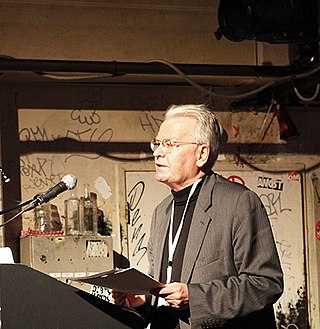
Robert Alwyn Petrie Hewison is a British cultural historian.

Stanley Weintraub was an American historian and biographer and an expert on George Bernard Shaw.

Abbot Hall Art Gallery is an art gallery in Kendal, England. Abbot Hall was built in 1759 by Colonel George Wilson, the second son of Daniel Wilson of Dallam Tower, a large house and country estate nearby. It was built on the site of the old Abbot's Hall, roughly where the museum is today. Before the Dissolution of the Monasteries this was where the Abbot or his representative would stay when visiting from the mother house of St Mary's Abbey, York. The architect is unknown. During the early twentieth century the Grade I listed building was dilapidated and has been restored as an art gallery.

Nocturne in Black and Gold – The Falling Rocket is a c. 1875 painting by James McNeill Whistler held in the Detroit Institute of Arts. The painting exemplified the Art for art's sake movement – a concept formulated by Pierre Jules Théophile Gautier and Charles Baudelaire.

Symphony in White, No. 1, also known as The White Girl, is a painting by James McNeill Whistler. The work shows a woman in full figure standing on a wolf skin in front of a beige curtain with a lily in her hand. The colour scheme of the painting is almost entirely white. The model is Joanna Hiffernan, the artist's mistress. Though the painting was originally called The White Girl, Whistler later started calling it Symphony in White, No. 1. By referring to his work in such abstract terms, he intended to emphasize his "art for art's sake" philosophy.
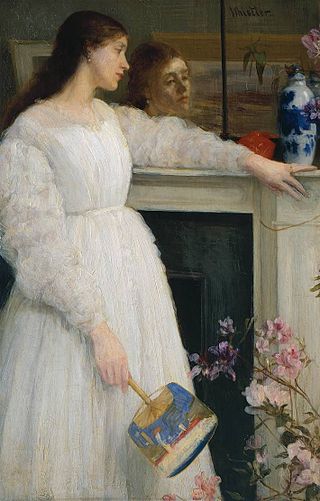
Symphony in White, No. 2, also known as The Little White Girl is a painting by James McNeill Whistler. The work shows a woman in three-quarter figure standing by a fireplace with a mirror over it. She is holding a fan in her hand, and wearing a white dress. The model is Joanna Heffernan, the artist's mistress. Though the painting was originally called The Little White Girl, Whistler later started calling it Symphony in White, No. 2. By referring to his work in such abstract terms, he intended to emphasize his "art for art's sake" philosophy. In this painting, Heffernan wears a ring on her ring finger, even though the two were not married. By this religious imagery, Whistler emphasizes the aesthetic philosophy behind his work.

Symphony in White, No. 3, is a painting by James McNeill Whistler. The work shows two women, one sitting on a sofa dressed in white, and the other resting on the floor, with a yellowish dress. The model on the sofa is Joanna Heffernan, the artist's mistress. By calling the painting Symphony in White, No. 3, Whistler intended to emphasize his artistic philosophy of corresponding arts, inspired by the poet Charles Baudelaire. The presence of a fan on the floor shows the influence of Japonisme, which was a popular artistic trend in European art at the time. Whistler was also greatly influenced by his colleague and friend Albert Joseph Moore, and their works show considerable similarities.

Mother of Pearl and Silver: The Andalusian is a painting by James McNeill Whistler. The work shows a woman in full figure standing with her back to the viewer, with her head in profile. The model is Ethel Whibley, the artist's secretary and sister-in-law.

Beatrice Whistler was born in Chelsea, London on 12 May 1857. She was the eldest daughter of ten children of the sculptor John Birnie Philip and Frances Black. She studied art in her father's studio and with Edward William Godwin who was an architect-designer. On 4 January 1876 she became the second wife of Edward Godwin. Following the death of Godwin, Beatrice married James McNeill Whistler on 11 August 1888.
Rosalind Birnie Philip was the sister-in-law of James McNeill Whistler. After the death of her sister Beatrice in 1896 Rosalind acted as secretary to Whistler and was appointed Whistler's sole beneficiary and the executrix in his will.

The Whirlwind was a short-lived British newspaper, published in 1890 and 1891. It was known for its Individualist political views and its artwork by Walter Sickert and James Abbott McNeill Whistler. It was also strongly Jacobite and played a leading role in the Neo-Jacobite Revival of the 1890s.
Daniel E. Sutherland is an American historian who has written books about 19th century America. He wrote a book titled The Confederate Carpetbaggers about southerners who moved north after the American Civil War.


















